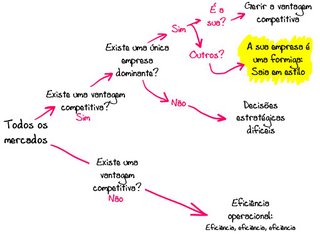.
Sem dor, como é que uma empresa reconhece que precisa mudar de vida? Sem dor, como é que uma startup descobre que o que está a testar não tem futuro?
"Decline occurs, in their view, when an organization fails to “anticipate, recognize, avoid, neutralize, or adapt to external or internal pressures that threaten the organization‟s long-term survival” (Weitzel & Jonsson, 1989, p. 94). In the absence of appropriate corrective measures, organizations in decline will proceed through the following five stages:BTW, aplicando este modelo ao país, o que caracteriza a 4ª etapa é tão familiar:
- Blinded. Organization is unable to recognize adverse changes; decline begins.
- Inaction. Organization recognizes problems, but does not take corrective action due to perceived costs of reform or confusion about appropriate responses; decline becomes noticeable.
- Faulty Action. Organization takes some form of action, but response is ineffective due to incorrect decisions or inadequate implementation.
- Crisis. Internal disunity grows as organization recognizes that drastic action is needed, but not occurring. Leaders may be ousted, and revolutionary changes proposed; last chance for reorganization and reversal.
- Dissolution. Reform efforts have failed, stimulating intense internal conflict and the exit of key members and personnel. Regardless of effort level, the demise of the organization can no longer be avoided.
...
Ironically, a record of past success and recent´growth can lead to overconfidence and a failure to allocate resources (Moi ici: Recordar o recente "O sucesso passado é um perigo, porque cria uma nova realidade") to the task of problem detection and effective scanning of the environment.
...
In the second stage, the organization recognizes signs of declining performance, but fails to take corrective action. At this point, the signs of decay will be manifested unambiguously in declining profits and sales or, in the case of voluntary organizations, in declining membership.
.
There are several reasons why an organization may fail to respond adequately: the possibility that the threat may turn out to be temporary encourages hesitation to act; the pursuit of reforms is costly and disruptive; the incumbent leadership may be deeply associated with and committed to the current strategy (which previously functioned well); or the leadership may lack the knowledge and skills necessary to plan and implement reform. As decline deepens, leaders manifest signs of “denial, avoidance, resistance, or procrastination,” and are tempted to cover-up or distort negative information.
...
When an organization enters the third stage, overt indicators of declining performance continue to multiply, but corrective action is inappropriate or ineffective, or fails to be implemented effectively. The organizational response may fail because the leaders are drawn to quick, expedient, and incremental changes, or simply to those that are easiest and least expensive, rather than pursuing the major and costly reorientations that are needed. Leaders are likely to implement “efficiency and cutback measures, using the same structures, processes, and personnel, and retaining the same power structures”
"When an organization reaches the crisis stage, a major reorientation and revitalization must take place or the organization will suffer drastic and certain failure. At this point, growing evidence of failure produces chaos, anger, divisiveness, and much talk of the need to get “back to basics.”" (Moi ici: As famosas "Reformas estruturais")Trechos retirados daqui.
.
Interessante, também, "Recognizing Decline: The Role of Triggers"






%2006.21.jpeg)











